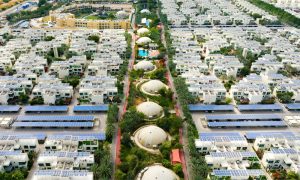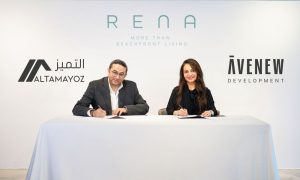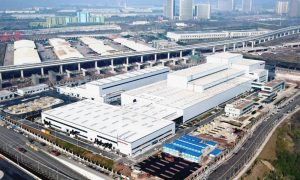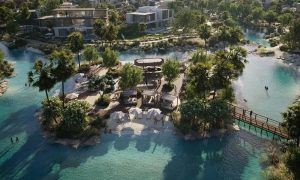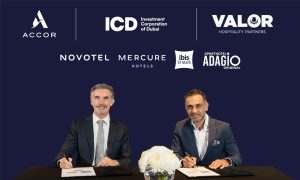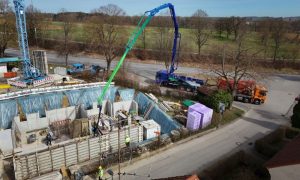Making sense of the green agenda in real estate – Is ambition matched by reality?
With the government’s commitment and developers’ dedication toward finding more economically feasible solutions, the built environment can help achieve the national climate and energy goals and create a more sustainable future says Yousuf Fakhruddin, CEO, Fakhruddin Properties

With the UAE government’s commitment towards sustainability and national goals for environmental conservation, the green agenda in real estate is now mainstream. Developers have started to see the importance of incorporating sustainable practices into their projects and understand that benefits of green buildings are not just progressive and far-reaching, but actively help in combating climate change and building prosperous communities to propel economic recovery and development.
However, while there is a lot of emphasis on green practices and sustainability initiatives are all happening in various capacities, it is still a work in progress and there’s a long way to go. It is one thing to have an agenda and another thing entirely to successfully deliver on that agenda. This requires much deliberation around one of the most critical aspects of sustainability in real estate, economic feasibility.
This is the key question developers need to answer to make sustainability a reality in the UAE. New technologies not only provide sustainable and innovative solutions to climate change but also offer developers the opportunity to create more carbon-conscious buildings. Carbon conscious buildings will not only see an increase in value, as occupiers are increasingly willing to pay more for green buildings, but these buildings also have the potential to reduce operating costs by up to 30%, according to studies.
However, despite the benefits of carbon-conscious buildings, many developers are still hesitant to invest in sustainable architecture due to the high cost of implementation. From an occupant point of view, many people may initially be reluctant to spend more on something that can save the planet in the future when they can save money now if they move into conventional, largely unsustainably constructed spaces. The onus is on the developers here because they can source, integrate, and afford sustainable solutions at a much larger scale (and for cheaper) than any individual occupant. Now, with the UAE’s commitment to the green agenda, developers have a golden opportunity to do what’s good for the planet without burning big holes in their pockets.
A growing number of feasible solutions can be incorporated into the built environment to optimise energy consumption, reduce wastage, and improve living conditions that are sustainable and cost-effective in the long run for both developers and occupants.
Air to Water technology – Generating Clean Drinking Water from Humidity. Atmospheric Water Generator Technology (AWG) machines are an excellent method for ensuring that more people have access to potable water. Developers can utilise atmospheric water production to collect this water vapour and provide clean drinking water to their occupants. We plan to employ this unique water-saving technology in our future developments.
Water Conservation and Monitoring Technology. There are several intelligent and innovative water recycling solutions for houses and commercial spaces that assist in reducing waste at the source. Water recycling in homes is a highly effective and pocket-friendly method to save water. These systems gather, purify, and recycle the water used in showers, dishwashers, washing machines, and air conditioning units.
Energy Efficient Paints. There are wall paints available today that help you save energy. The advantages of the coating include reflection, directed evaporation, anti-electrostatics, and the incredible material endurance of these paints, which makes them robust, flexible, and long-lasting. Developers can use water-based and solvent-free paints to preserve their surfaces from moisture, dust, UV radiation, air pollution, and mildew; as we do.
Sustainable Building Blocks. Insulated Concrete Form (ICF) construction can be a game-changer for builders since it may significantly reduce energy needs and minimise heat exchange between the building’s interior and exterior. These blocks are non-combustible and do not rot or decompose; thus, they guarantee longer-lasting structures. As a result, ICF blocks can create a concrete wall with around twice the overall strength of those constructed using conventional methods.
Home automation. Automation is essential for lowering energy expenses and CO2 emissions, since the water temperature in the shower, like the ambient environment temperature, can also be tracked and automated. Automation through intelligent residential solutions can considerably decrease the running time.
Smart Building Management System. Using a holistic approach to monitoring and managing all automation throughout a portfolio in real-time – this helps in achieving optimum asset performance, sustainability, cost-effectiveness, and end-user experiences. Building management/automation systems (BMS/ BAS) can become the solid backbone of a real-estate portfolio’s lifecycle as they are proving to be a critical enabler of optimal performance.
Incorporating and integrating a number of these solutions is doable, and more importantly, affordable as well. Every structure can recycle its own water; therefore, it’s critical that they start doing so right away. The idea that water is a cheap and readily available resource must be rethought immediately.
Water recycling at the local level isn’t difficult, and its advantages are numerous. Circular water management solutions help occupants save money on their water bills while also optimising water usage and reuse. These affordable and efficient decentralised water recycling systems should be included in every new construction project. Also, during the hot and humid months throughout the region, there is a lot of water vapour in the atmosphere that can be utilised. AWG systems provide clean water that is free of contaminants, making it an ideal solution for providing potable water while also saving money.
ICF construction, on the other hand, can significantly lower the building cost, reduces energy consumption, and minimises upkeep requirements. Usage of energy efficient paint and glass also helps reduce costs by bringing down repair and repainting requirements. Something as basic as installing smart lighting systems lets lights stay off when they are not in use, and over time, occupancy and motion sensors may learn when certain rooms are empty to turn off or dim lights.
BMS systems, on the other hand, offer automation capabilities that optimise assets to keep them running for longer, resulting in everyday cost savings that add up to considerable amounts annually throughout the life of the building. These are just a few simple solutions that developers can adopt to save money on their energy bills while also reducing CO2 emissions.
Looking ahead, it cannot be denied that there is a long and challenging road ahead for developers to make sustainability a reality globally. However, with our government’s commitment and developers’ dedication toward finding more economically feasible solutions, we are confident that we can together achieve our national climate and energy goals and create a more sustainable future for all.
